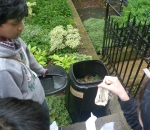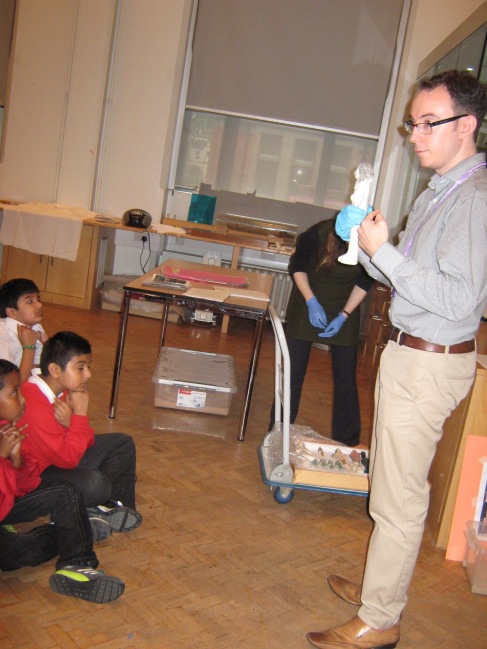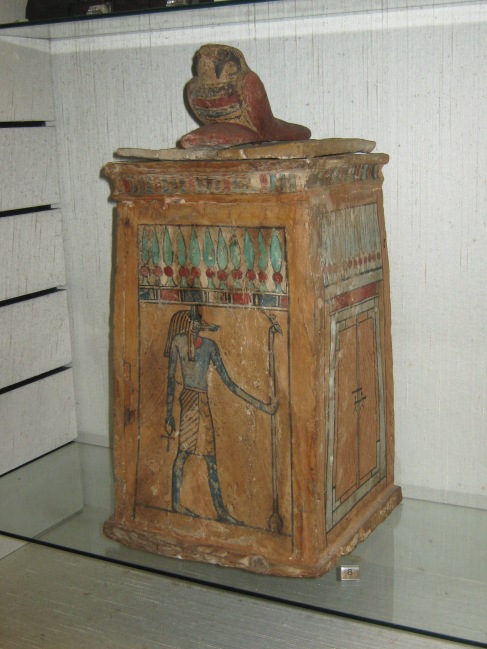All the way back in January and February of this year the Museum was working with eight Year 8 students from Matthew Moss High School in order to create a Midden – so that we could research the decay and survival of a number of everyday objects. We called it our ‘Experiment in Archaeology’ and installed the midden in our Allotment with plans to excavate just before the opening of the new Ancient Worlds Galleries in late October.
 Well, our Year 8’s were welcomed back to the Museum last week and were treated to a tour of the University of Manchester’s Chemistry labratory so that they could use the equipment to test a variety of materials. But first they had to identify the differences between organic and inorganic materials and determine which of these categories each of their samples placed in the midden belonged to. They used the Museum’s collection as a resource for discussion and to help them place their samples.
Well, our Year 8’s were welcomed back to the Museum last week and were treated to a tour of the University of Manchester’s Chemistry labratory so that they could use the equipment to test a variety of materials. But first they had to identify the differences between organic and inorganic materials and determine which of these categories each of their samples placed in the midden belonged to. They used the Museum’s collection as a resource for discussion and to help them place their samples.
After examining some of the Museum’s collection they then went across to the meet Kristy Turner, RSC School Teacher Fellow at the School of Chemistry. Here is what she did with the students:
The students used FTIR spectroscopy to look at the materials in the objects they brought with them. This method fires an infrared beam (a bit like that coming from your TV remote) onto the surface of the sample and measures how the beam changes when it is bounced off the sample and returned to the machine. It can show us information about chemical bonds in materials, especially materials made from mainly carbon, like plastics. The students will return in September or October to reanalyse the materials they have dug out from the midden and see if anything has changed. This will let them see if being in the midden has made any changes to the chemical structure of the materials.
Tracey Martin, who accompanied the students on their visit, sent us an email to say: “a BIG thank you! Our Year 8 boys thoroughly enjoyed themselves with you all yesterday“. Below are a few of the photographs of the boys working hard in Chemistry.
- Last year’s midden
 They also placed some more items in the midden, mostly organic materials, to see what effect a shorter time period might have on such samples. We can’t wait to welcome them back as Year 9’s in September or October to dig up their midden and retrieve what’s left (if anything) of their objects in preparation for the Ancient Worlds Galleries opening!
They also placed some more items in the midden, mostly organic materials, to see what effect a shorter time period might have on such samples. We can’t wait to welcome them back as Year 9’s in September or October to dig up their midden and retrieve what’s left (if anything) of their objects in preparation for the Ancient Worlds Galleries opening!


























